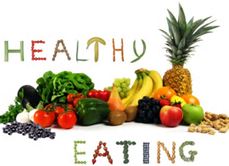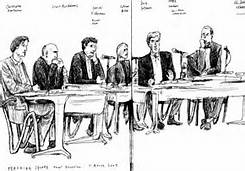
Cherry Blossom Tree
I know what the calendar says, but it doesn’t feel like the first days of spring to me. I live in the Northeastern mountains of Pennsylvania and it is taking every bit of restraint for me not to push the thermostat up.
Having said that, I need to take a long hard look at where I am with regard to my weight loss goals for the year and I am not proud of my results. Although they aren’t disgraceful, my weight is not where I wanted it to be. And to be perfectly honest, I have to admit, I haven’t kept to my plan the way I should have if I really and truly wanted to achieve these goals.
That is what today’s blog is about…not just weight loss and goal setting, but I will delve into some of the excuses and justifications I have been telling myself (all of them untruths in some way or another.) These ‘untruths’ are the head games I’ve been playing that have kept me from reaching my weight-loss goals so far this year.
1. I can have this now. It isn’t like I do it all the time:
The damage here is quite devastating. First I am lying to myself that I can have it and ignoring the fact that somewhere within me, I believe maybe it isn’t a good choice to begin with. Let me explain. There would be little or no need for me to convince myself that I can have it, if I believed from the start that it is something I should be having.
This is damaging too, because it is wide-spread. It may be an extra amount of a particular food…or it could be a certain food that I know triggers me and increases my likelihood for more choices of this kind. What I mean here is that for me, some of the food choices I make may not be ‘harmful’ foods for weight loss at all. But they may be foods that carry emotional attachments for me that get me to feel entitled to other foods or different ways of eating that, in time, can set me on the wrong path.
In fact, it may even be something like eating too little or even missing a meal and then becoming extra hungry and more likely to choose something in a frenzy or when my frame of mind is nowhere that it should be prior to selecting foods that are best for me and my goals.

Sliver of Cake
2. Just this little bit won’t hurt:
Once again, I am feeding in (pardon the pun) to my sense of entitlement that most likely will present itself at a time when I need to remain mindful and true to myself and my goals. When I start to let myself feel as if I ‘deserve’ or am entitled to certain things, I am truly coming from a perspective of feeling deprived. But if I am in the right frame of mind, the truth is that I don’t deprive myself when I eat well and make good choices. In fact, it is just the opposite. I am doing more good for myself and treating myself better with the health food choices and I know that to be true. I nurture myself better when I eat healthfully and mindfully. I enjoy the meals I take the extra time and care to prepare. I put more effort into selecting foods I really enjoy and savor and I feel great about my dedication and conviction to my overall well-being.
If I am able to recognize this head-game as the huge damage it can do and the major step it causes me to take in a direction that is bad for me, then I will not fall prey to the major harm this teeny little statement can do.
3. I can always work it off later:
Wow, is this one a crock! If you’re like me, making time to consistently keep to a regular workout is tough enough let alone actually adding in the extra day or extra time for the workouts. There’s no way I’m going to put in EXTRA time and energy; not realistically, anyway. And since this is about being honest and truthful so I don’t trick myself into making mistakes that sabotage my efforts.
Here’s the reality. If I am telling myself that I can work it off later; I am very well aware of the fact that it is not something that is on my ‘should choose’ list to begin with. By seeing it for what it truly is, I can then make a very mindful decision of whether I want to include it in my daily intake or not. If I do; then I have a much better chance of truly paying the price at the gym or on the treadmill, whatever it takes.

Monday Morning
4. I’ll start over again next Monday:
This is killer! Even if I am truly willing to start over again when Monday comes around again, I’m giving myself permission to let myself go for the rest of the weekend and for any remaining days of this week. But in addition to that, I’m also looking at my commitment to eating healthier as a very temporary endeavor rather than as a lifetime improvement or decision. This is not about just losing the weight. This is about living a healthier lifestyle and taking better care of myself through better nutrition. It is not a Monday through Sunday event.
With the proper mindset from the beginning, I am much more likely to see full-time, life-lasting results and improvements. I also don’t see this a period of deprivation or doing without. I see it as something I can keep doing and building upon; something I can get better at and improve and work into my everyday life.

Weight Loss
5. Its all about the number on the scale:
This is perhaps one of the worst ways to measure progress, actually. Women know more than men, how the changes in weight, just based on water-gain or loss in just a single day, can blow an entire week of good choices out of the ballpark.
Scales don’t truly tell the tale in other ways as well. There are plenty of times when inches are lost and weight gets redistributed which is a clear sign that your life changes are taking hold the way they should.
And, if your scale is anything like mine, basically, the wind can alter the number. There have been times when I have gotten on the scale, weighed myself, gotten off the scale, weighed myself again; and there have been two different numbers, sometimes with a variation of 4 to 5 pounds. Needless to say; not the most reliable of measures.

Being Bad
But I believe the most harmful thing we do to ourselves when it comes to psychologically hurting ourselves regarding our weight-loss or healthful eating goals is we confuse our choices and our behaviors with our inner selves. We actually start to believe that ‘we’ are bad when we choose to eat foods that are not good for us; or we believe we are bad because we gained a pound. I know I felt this way at times if I gain weight when I’m trying to lose. I feel as if I’ve failed and I feel like I’m bad for making the choices I made.
We learn early on as parents, that when a child does something inappropriate, it is vital for that child’s self-esteem that we separate the behavior from the child. We make it clear that the child is not a bad child, just that the behavior choice was inappropriate. Good people make wrong choices all the time. It doesn’t make them bad people.
We are not our weight. Our weight does not define who we are. Somewhere, society has convinced us that if we are obese then we are ‘less than.’ How ironic is that? But in any case, our weight does not define who we are. In fact, the more negative our emotional connection is to food and our weight, the more likely we are to overeat or make wrong food choices. We need to work on shedding the excess baggage above our necks, not just the excess weight. Learn to know yourself and care and love yourself, and the battle of the bulge will not be as overwhelming.
ABOUT THE AUTHOR:
Judy is a licensed clinical social worker and has worked extensively as a counselor with children, adolescents, couples and families. Judy’s professional experience in the mental health field along with her love of writing, provide insight into real-life experiences and relationships. Her fresh voice and down-to-earth approach to living a happier, more meaningful life are easy to understand and just as easy to start implementing right away for positive results!
































